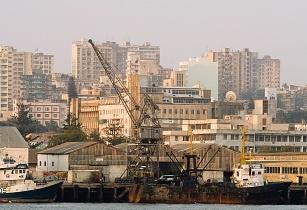China, the world’s second-largest economy, has assisted the African region through greater inflows of bilateral aid, trade, and infrastructure spending, especially over the past two decades – thus helping to raise the continent’s potential growth and business profile in external markets
China’s ties with Africa pre-date its resource-hungry economic boom.
African governments broadly see China as a healthy counterbalance to Western influence but, as ties mature, there are grounds for more balanced trade relations in coming years.
China’s sustained robust growth until recently made it a pivotal country in driving global commodity markets. During 2010-2014, China accounted for more than 40, 10 and 20 per cent, respectively, of the world’s metal, crude oil and agricultural crops consumption, plus one-fifth of primary energy demand according to the World Bank.
Between 2010 and 2014, Sub-Saharan Africa (SSA) benefited from China’s insatiable appetite for raw materials as prices of agricultural commodities, base metals/energy and precious metals sky-rocketed by100, 160, and 300 per cent, respectively – referred to as the ‘super-cycle’ era.
China’s stellar rise has turned it into a major commercial hub for Asian and SSA countries. One-tenth of South Africa’s exports are shipped to China, while Angola remains its second-largest oil supplier since 2005 and Chinese buyers are the biggest customers of Zambia and Democratic Republic of the Congo for copper. Trade has boosted living standards of many people through wider availability of cheap Chinese consumer goods, from clothing, televisions to mopeds and mobiles.
China ranked among ‘top-three' SSA foreign investors by value in 2003-15, with US$38bn reportedly invested, only behind United Arab Emirates (US$79bn) and India (US$45bn), reported London-based greenfield investment monitor fDi markets. Besides the extractive sector, Chinese firms are also active in farming, construction, manufacturing, telecommunications and retail. More revealing is that about a quarter of all Chinese international engineering contracts were awarded in SSA in 2015 –mostly in transport (roads, railways, ports, aviation) and energy (hydropower).
Furthermore, soft loans to Africa provided through the China Export-Import Bank have funded essential public capital projects. Such infrastructure investment helps countries to better connect with global supply chains. In Uganda, China is financing two large hydroelectric plants, Isimba and Karuma and the toll highway between Entebbe International Airport and Kampala.
A gradual ‘re-balancing’ of China’s uninterrupted growth from investment and export-led to domestic consumption affects the global economy, but spillovers upon African commodity exporters are more acute compared to other regions
Although still robust by global standards, the economy is projected to grow at 6.6 and 6.2 per cent, respectively this year and next, the slowest expansion since 1990, according to the International Monetary Fund (IMF). Moody’s Investors Service recently cut China's credit rating by one-notch to A1 from Aa3 due to subdued economic outlook and soaring domestic debt.
The other two main agencies left their evaluations unchanged so far: Standard & Poor's AA- with a negative outlook, while Fitch Ratings A+ with a stable outlook.
Overall, China’s prosperity matters more for Africa than in the Organisation for Economic Co-operation and Development (OECD) regions. The IMF staff analysis shows that one per cent hike in trading partners’ growth boosts SSA’s growth by 0.6 per cent.
By contrast, a similar hike in China’s growth can uplift SSA’s growth by more than one per cent. But now, with flagging commodity prices and lower investment in China, the outlook for SSA exports is not bullish.
Since the mid-1990s, Africa witnessed a shift in trade patterns. Advanced countries took 90 per cent of SSA’s exports in 1995, but by 2015, emerging economies (led by China and India) accounted for more than half of them. The trend is similar on the import-side.
This new trade relationship has reduced the volatility of SSA exports – dominated by fuel and metal/mineral products. That, in turn, helped cushion the impact of the 2008-09 financial crisis, when advanced economies suffered a severe recession that curbed import demand. China, in fact, proved resilient by increasing imports from SSA – enabling the region to sustain healthy growth during global downturn.





















